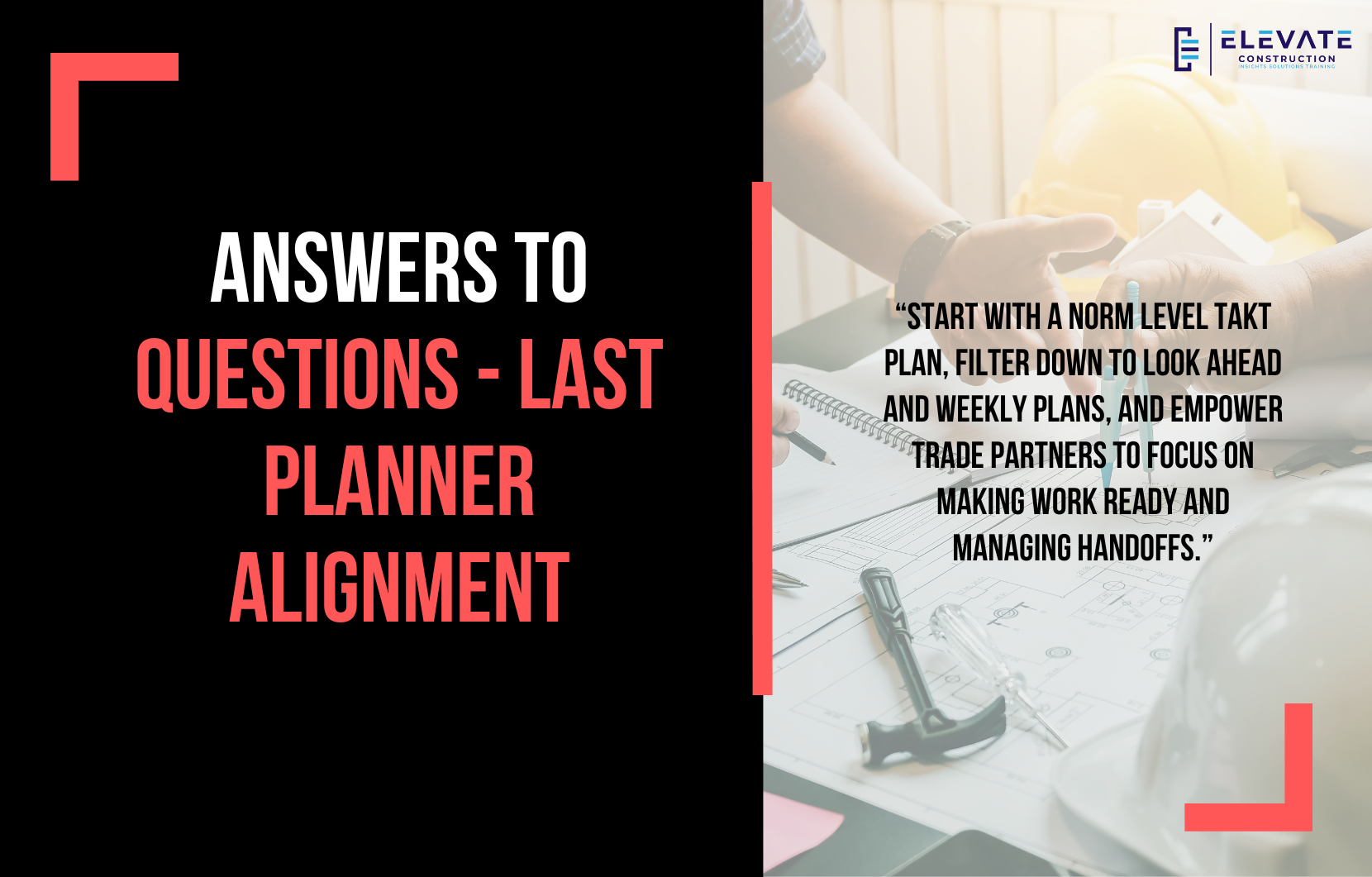Aligning Trade Partners Without Wasting Time
In this blog, I’m responding to a listener’s comments about how their company uses the Last Planner® System. They explained their process: using a large wall board to display dates and floors, having subcontractors write down their plans for the next few months, then updating the board weekly and transferring everything into Excel.
It’s a good effort and I respect the visual approach but there are a few problems with this method.
The Problem With Detached Boards
Visual boards are powerful. They help everyone see the plan. But when those boards are disconnected from the master schedule, there’s no vertical alignment. The risk is that trade partners plan what they want to do rather than what aligns with project milestones. This wastes time and creates misalignment.
My Recommended Approach
Here’s the method I use:
- Start with the Master Schedule: Use it as a macro or norm level takt plan. This is a production plan that simulates what’s possible, balancing workflow, controlling WIP, and aligning with customer demand.
- Pull Plan and Update: From that takt plan, conduct pull planning sessions to refine and update.
- Filter Down: Create six week make ready look aheads, then filter again to weekly work plans with trade partner input.
- Empower Foremen: At our boot camps, we emphasize that foremen should focus on preparing and managing their work packages, not doing the GC’s job. Their real value is in managing handoffs and making work ready, not endlessly coordinating weekly work plans.
This structure keeps the team aligned while respecting trade partners’ time and expertise.
Manual Processes Waste Time
Another issue raised was the amount of manual work handwriting stickies, transferring data to Excel, and re-entering updates. That’s duplication, and it drains value.
The purpose of a pull plan isn’t the sticky note it’s the commitment and the visibility. Whether that’s on a physical wall or in tools like Mural, Blue beam, or Snap to Grid doesn’t matter. What matters is alignment and clarity. In fact, some software can even digitize photos of stickies to eliminate double work.
Technology Can Help
The listener mentioned using Timoti, and I think that’s a solid option. There are other tools like Intact or Asta that can also work. Even Excel, if streamlined, is better than duplicating effort.
The key is to keep the process lean, aligned, and focused on flow not stuck in outdated habits.
Benchmarks for Last Planner®
If you’re looking for benchmarks or structure, I recommend the books Takt Planning and The First Planner System. They go into detail about building vertical alignment, filtering plans, and empowering trade partners without wasting time.
Remember, the goal is commitment and clarity, not handwriting stickies for the sake of tradition.
Key Takeaway
The Last Planner® System isn’t about sticky notes it’s about alignment. Start with a norm level takt plan, filter down to look-ahead and weekly plans, and empower trade partners to focus on making work ready and managing handoffs. Technology can streamline the process, but the real goal is vertical alignment and flow.
If you want to learn more we have:
-Takt Virtual Training: (Click here)
-Check out our Youtube channel for more info: (Click here)
-Listen to the Elevate Construction podcast: (Click here)
-Check out our training programs and certifications: (Click here)
-The Takt Book: (Click here)
Discover Jason’s Expertise:
Meet Jason Schroeder, the driving force behind Elevate Construction IST. As the company’s owner and principal consultant, he’s dedicated to taking construction to new heights. With a wealth of industry experience, he’s crafted the Field Engineer Boot Camp and Superintendent Boot Camp – intensive training programs engineered to cultivate top-tier leaders capable of steering their teams towards success. Jason’s vision? To expand his training initiatives across the nation, empowering construction firms to soar to unprecedented levels of excellence.
On we go

